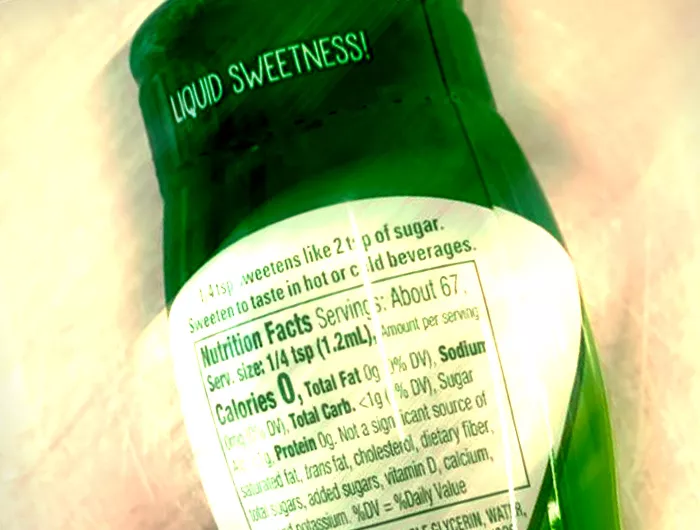What to know about shopping for low-cal sweeteners

Marlena Koch - CSPI.
NOTE
In an article accompanying this one—both recently published in our March 2023 print issue—we had reported that erythritol is a safe low-calorie sweetener. However, after we went to press, a new study found that it may raise the risk of blood clots. This version of the article has been updated to reflect the new study's findings.
Until we know more, limit your intake of erythritol (in sweeteners as well as some low-sugar ice creams, desserts, bars, drinks, etc.). Stay tuned for more on erythritol in an upcoming issue.
Want to try a low-calorie sweetener? Stevia extract, monk fruit extract, and allulose won’t turn cupcakes into cantaloupe (see No. 3), but they’ll sweeten your coffee, tea, oats, yogurt, and more without empty calories. (As for taste...that’s up to you. Some people detect an aftertaste, but others don’t.) Here’s what to know.
1. Liquid, packet, or granulated?
Sweeteners like stevia or monk fruit extract come in packets, liquids, and big multi-serving bags.
The packets and liquids are typically sweeter than sugar, so they’re good for adding a sweet jolt to drinks and more. (Try stevia-sweetened Truvia Original Liquid.)
Baking? Look for a bag of a granulated sweetener that’s a “1:1 sugar replacement” or “measures like sugar.” That way, you needn’t worry about filling the volume that sugar would typically take up in the finished product.
Not sure if a blend is baking-friendly? Check the label or website.
2. To avoid GI woes, check the ingredients.
Stevia and monk fruit extracts are hundreds of times sweeter than sugar, so it takes just a tiny amount to get the job done. That’s why they’re often blended with other ingredients to bulk them up. (That makes them easier to measure and helps replace sugar’s volume and texture in baked goods.)
Bulking agents like maltodextrin and dextrose, and the smidgen of glycerin in liquid sweeteners, are unlikely to cause GI trouble. But other bulking agents—processed soluble fibers like inulin or chicory root, or oligosaccharides—can cause gas in some people.
Another bulking agent: the sugar alcohol erythritol. A new study reported that it may raise the risk of blood clots. Until we know more, limit your intake of erythritol and check ingredient lists—to see if it’s been added to “monk fruit” or “stevia” sweeteners, as well as “baking blends.” (Stay tuned for more on erythritol in an upcoming issue.)
3. Don’t expect calorie miracles.
If you use a low-cal sweetener to replace all the sugar in tea or lemonade, you’re down to essentially no calories.
But the calorie cuts that come from subbing low-cal sweeteners for sugar in desserts and other foods may be modest. (A recipe for cinnamon rolls on Truvia’s website, for example, only drops the calories from 270 to 230.) Why? Most of the calories come from flour, butter or oil, etc.
Note: Counting carbs? You might get 1 or 2 grams, but only from large servings of some sweeteners’ bulking agents (like dextrose or maltodextrin). For example, a 2-teaspoon serving of Splenda Stevia Granulated—stevia plus maltodextrin—has just ½ gram of carbs and 2 calories, the company told us. (The calories round down to 0 on the Nutrition Facts label.)
4. Allulose is a tad less sweet than regular sugar.
So if you rely on allulose as a sole sweetener, you may need to add extra to reach the sweet spot. And if that’s more than your gut can handle, stay away. In one study, allulose led to diarrhea, bloating, or abdominal pain at 35 grams but not at 27 grams.
A teaspoon of any sweetener holds about 4 grams, max. But if you’re replacing cups of sugar—say, in a dessert—do the math to see how much is in a serving. (A cup is equal to 48 teaspoons.)
5. Baking is complicated.
Replacing all the sugar in a recipe with stevia or monk fruit extract? Don’t expect to bake something that looks and tastes like the real thing.
Why? Sugar does more than taste sweet. It’s also a key player in the chemical reaction that yields nice golden browning on top of cookies, cakes, etc. And sugar is “hygroscopic”—it attracts water—so it keeps baked goods moist and tender.
What to do? Replace just some of the sugar with a low-cal sweetener. (Try allulose, which browns.) And go for recipes that get sweetness and moisture from fruit. Banana bread or apple crisp, anyone?
This article comes from Nutrition Action. We don't accept any paid advertising or corporate or government donations. Any products we recommend have been vetted by our staff and are not advertisements by the manufacturers.

Subscribe to Nutrition Action
We name names, remain strictly objective, and deliver scrupulously researched advice about food of all kinds, staying healthy with diet and exercise, and more.

